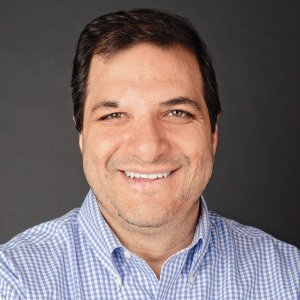Business — and Life — Flows in the Absence of Friction

STORY INLINE POST
We live in a world where everybody wants more “flow.” It may be cash flow, customer flow, process flow or personal flow.
As a successful lubricant company that assures processes flow at some of the most important global industrial companies, including leading automotive, container glass, mining, and steel makers, and that exports its tribological solutions to 37 countries, we've learned a thing or two about “flow” and how to identify the points of friction that limit you or your organization’s potential to thrive and move the world we live in.
Identifying Real Points of Friction
The first mistake we see people make repeatedly is to confuse means with ends. Several of our global customers — let's call them Super Steel, Inc. or Big Bottle Corp. — learned the value of this way of thinking back when they embarked on cost-cutting initiatives. Following the logic of economies of scale, they started blindly standardizing what lubricants to use in their industrial plants around the world, hoping to leverage their negotiating power with global lubricant suppliers.
These suppliers started to limit product diversity by offering “one size fits all” solutions to assure their own economies of scale. As promised, lubricant expenses (typically 1 percent of overall maintenance spending) fell “significantly.” However, overall efficiencies, productivity and profitability in many cases didn’t. Typically, total maintenance spending in some cases rocketed up to 40 percent (we’re now talking about thousands or millions of dollars in waste).
Lesson 1: Means ≠ Ends
Be aware that changing one tiny variable can impact the overall performance of your organizational system. Reducing costs is usually not an end, but a means toward increasing the overall profitability of the organization (the end).
Always make sure that your teams clearly understand what the ultimate goal is. This will empower people to adjust their tactics on the way toward solving the real challenges.
What makes it difficult to implement is the second mistake people make: confusing speed with progress.
Don’t Confuse Speed with Progress
The thing that increases the temptation to look at business processes in a reductionist way is the difficulty of identifying the relationship between cause and effect due to a delay in system feedback. By the time the consequences raise awareness, often millions of dollars have been wasted, thousands of people have been fired and irreparable collateral damage for the shareholders has been created.
Like the spread of a bushfire accelerated by adding oxygen, “best practices” quickly expand within a company, across companies and industries because of the “refreshing wind of hope” the early success stories provide to busy collaborators. Soon, it becomes part of our “way of life.”
We guess that it’s something in human nature that makes these “no brainers” so attractive. The “logical” short-term results are so evident that it is tempting to act quicky. Reducing the price of a lubricant by 50 percent per liter is evidently a “smart” and “obvious” decision that our overloaded brains easily understand. Anticipating that you might either be consuming up to 10 times more, or could be spending five times more on spare parts, or having your process come to a halt for hours and lose millions in productivity is not as evident.
We believe that our success as lubricant designers is largely driven by our curiosity for understanding the complete system goals and dynamics before recommending a lubricant (one variable in the system) to our customers. We use “heat” in a broader sense as an indicator of friction that might lead to wear and failure if not treated correctly because of the heat derived from friction between mechanical components or “heat” represented by friction between people, departments, stress levels.
So, when we demonstrated the interplay between the variables and provided proof on how a tailored lubricant could significantly reduce friction, wear and increase productivity, visionary decision-making units turned their local ships around and thereby contributed to overall group profitability.
Lesson 2: In complex dynamic systems like in any organization, delays in feedback make it almost impossible to correlate local improvements with global system optimizations. However, friction will manifest itself through heat. Be sensitive to increasing “friction” between departments, sudden spikes in usually stable trend lines, high employee turnover or unexpected accidents. Then, make sure to question your previous assumptions about reality.
Once you have identified the hot spots, take time to understand correlations you were not aware of, revise your previous decisions and connect the dots. It might save you millions.
Can You Connect the Dots Looking Forward?
You might recall what Steve Jobs famously said in his commencement speech at Stanford University: “You can’t connect the dots looking forward; you can connect them only looking backward.” After more than 36 years in business, however, we have become pretty good at making more sustainable decisions by anticipating what’s to come.
What has made things easier for us is the habit of practicing these lessons and applying them to different aspects of business and life, urging ourselves to expand how we see friction: from a purely mechanical phenomenon to a human and social one.
For example, when some of our top individual contributors asked to be promoted to managerial positions and we discovered that it was because of the reward of higher salaries and not because they were passionate about their new role, we questioned our organizational structure (see image 1), incentive schemes and opened new ways for growing (see below).

Today, we have everybody aligned with the organizational priorities and have opened up five growth paths (become a leader, become a specialist, become a connector between different areas, become a catalyst for new initiatives or explore different areas), each of which provides an opportunity to not only grow your salary but also thrive as a whole person and contribute to the overall impact our company, as a whole, makes, today and in the future.
Tackling the Real Points of Friction Caused by COVID-19
Another example is the COVID-19 pandemic. We understood the urgency for people to “stay home” and for “social distancing” to slow down the spread of the pandemic. However, we’ve anticipated the consequence these practices will have on the economy and society as a whole. We stepped up our game and leveraged our world-class engineering talent to develop solutions that will help us to “stay safe” and assure that people who are maintaining the supply of food and other existential products “collaborate safely:”
- As an alternative to alcohol-based hand sanitizers that can harm our skin, we have developed the world’s first hand cream that provides its antiviral properties for up to three hours. A few milliliters after washing our hands will keep us safe while commuting, in the supermarket or during business trips (Link).
- As a complement to face masks that accumulate bacteria if not exchanged regularly, we have developed the world’s first coating spray for textile surfaces that will eliminate bacterial residue and maintain its antiviral properties for 24 hours. A few milliliters will keep users of face masks not only safe from COVID-19 but from bacterial infections.
- With the goal of minimizing the viral load that is spread through air conditioning systems, we have developed the world’s first coating for air conditioning filters that maintains its antiviral properties for up to 14 days. A few milliliters every two weeks will not only minimize the risk of viral spread but maintain the productivity of people working in confined spaces (Link).
- And as an alternative to having cleaning staff constantly running around and cleaning contact surfaces, we have developed the world´s first surface paint that maintains its effect for more than 30 days. Applied on critical contact surfaces, it will limit the spread of virus exponentially and free up human resources.
None of these technologies have anything to do directly with our core business of making lubricants. Nevertheless, we realized that these new points of friction were indirectly putting our company at risk from serving our 2,500 customers around the world, and could even be fatal for our industrial clients, economy and society. So, it was an easy call to repurpose our existing capabilities and lab infrastructure to serve a higher purpose.
We hope that our experience will serve as encouragement for you and your team to not only tackle the friction within your organization, but also in your community as a whole.
Interlub Group | The Uncommon Lubricant Company© is an organization that solves critical process challenges for top industrial companies by designing tailor made lubricants and other surface technologies. The company not only has eliminated millions of wasted maintenance dollars, but also been recognized as a role model by the president of Mexico for its contribution to science, technology, export, and social responsibility.
























